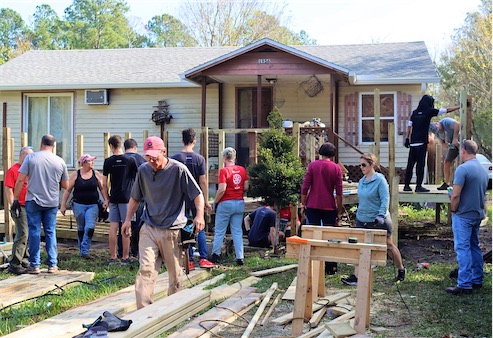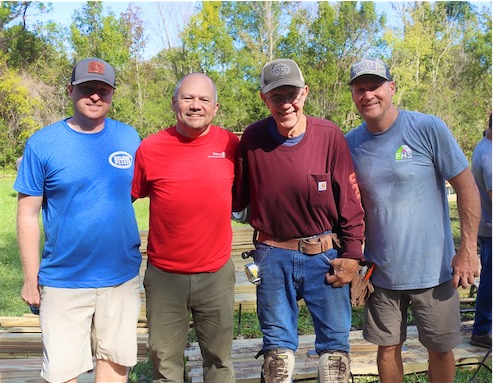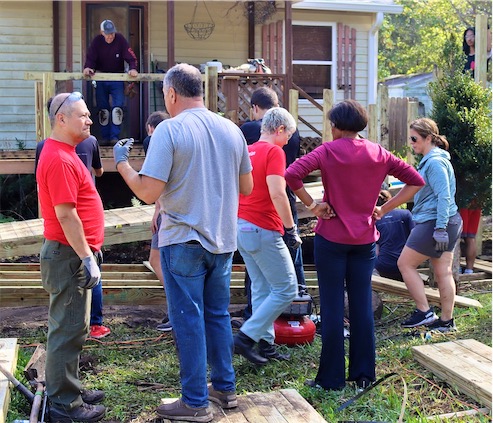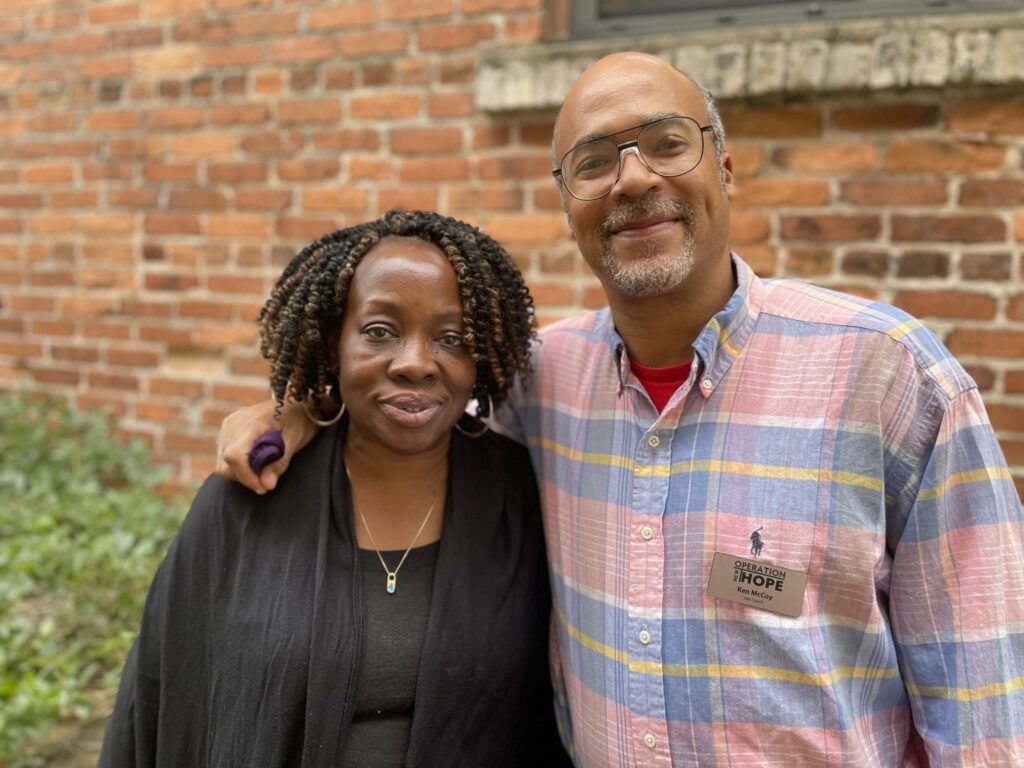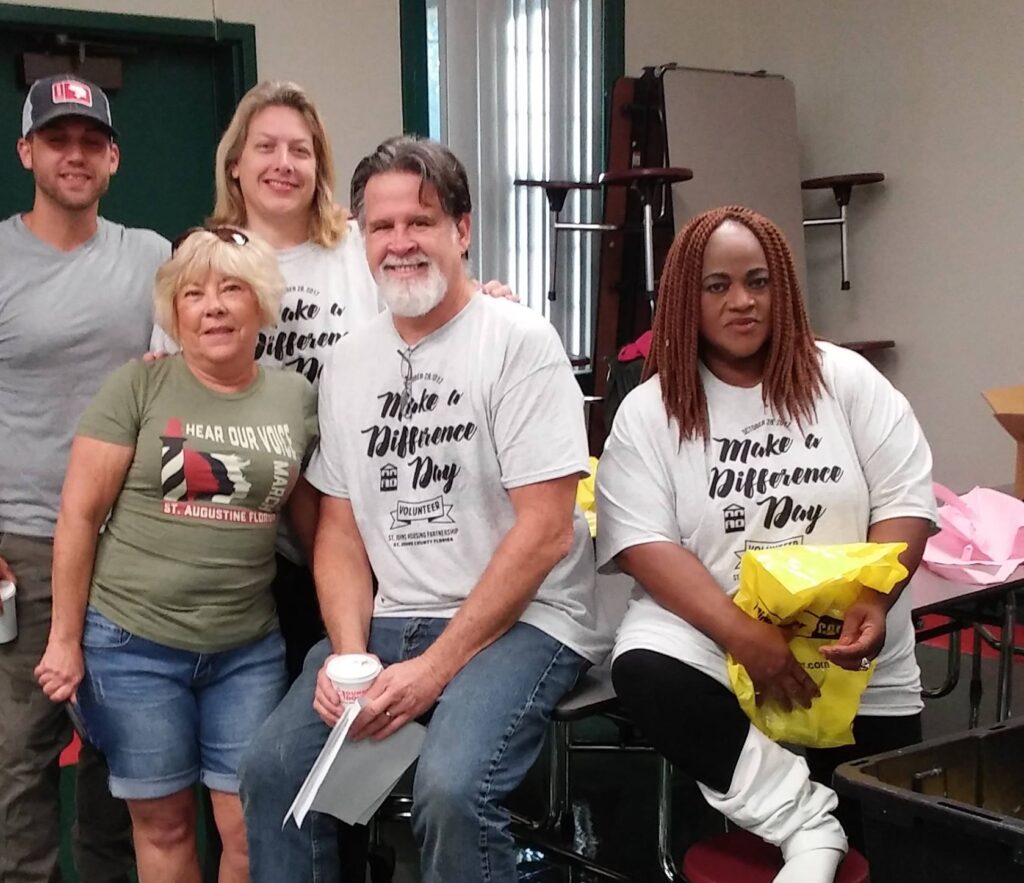For 27 years, St. Johns Housing Partnership has delivered sustainable, affordable housing
Reprinted from Ponte Vedra Recorder
Posted Wednesday, June 25, 2025 11:58 pm
By Shaun Ryan
The lack of affordable housing in St. Johns County continues to be a thorny, multifaceted issue. Local government has been seeking ways to address it. Studies by the St. Johns County Chamber of Commerce and the Florida Institute of Government seek to identify the root causes and possible solutions. And Habitat for Humanity of St. Johns County and Ability Housing are working to help struggling residents move into homes of their own.
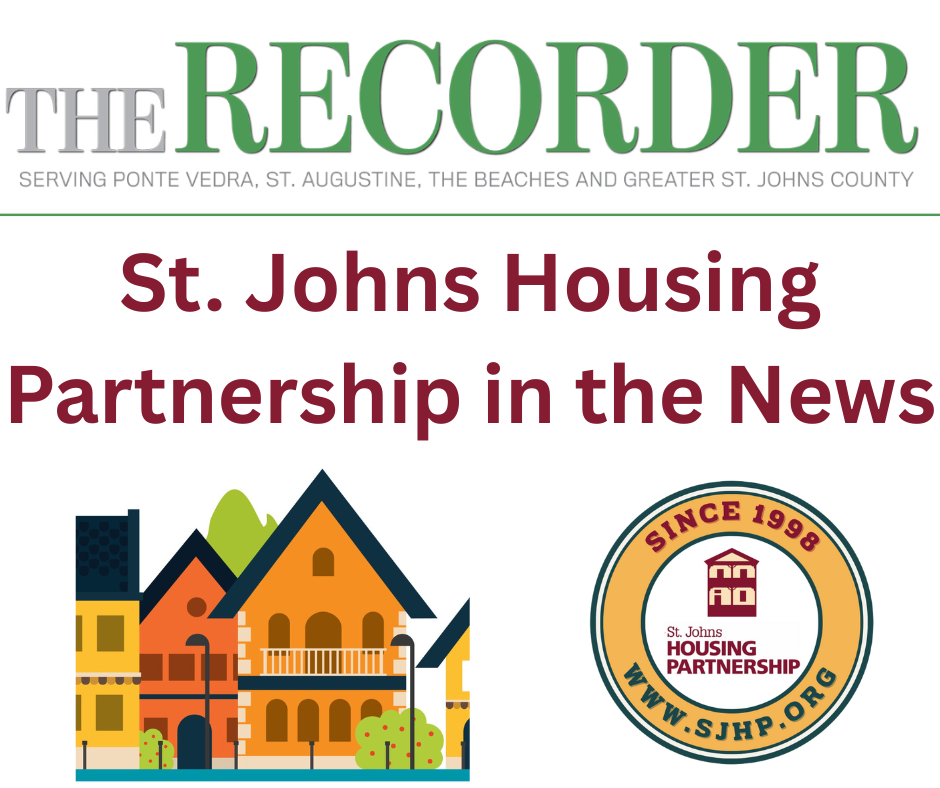
But the need continues to be great.
And beyond the obstacles to purchasing a home or even finding a place to rent, many county residents on low or fixed incomes encounter difficulties in maintaining the homes they already own.
For the past 27 years, the St. Johns Housing Partnership (SJHP) has stepped up to address as many of these issues as it can. But this is no walk in the park. It requires hard work, creative thinking and essential partners.
Therein lies an opportunity for all who want to help at-risk and low-income families and individuals repair, purchase, rent and live in an affordable, safe, clean home.
“Everybody has to have a decent place to live,” said SJHP Executive Director Bill Lazar. “At a certain point, if we don’t take care of those folks around us, there’s going to be a more expensive solution. Prevention is much less expensive than taking care of it after the fact.”
How great is the need?
Even those who will never have difficulty finding a home in their price range will still be impacted by this issue.
Employers must hire from a shrinking labor pool as workers flee to more affordable counties. This can impact the quality of service at restaurants or hospitality venues and precipitate shortages in those who perform essential services, such as teachers, law enforcement personnel, firefighters and nurses.
Motorists find roads clogged with commuters who must drive in from other counties; traffic delays and strains on the infrastructure are inevitable.
And the tax base can be impacted, placing more of the burden on those who can afford to live here.
In short, it’s a quality of life issue for everyone.
According to the Chamber’s most recent workforce housing report, 23% of the county’s 140,000 households spend more than 30% of their gross income on housing expenses. In fact, the report found that “none of the essential workers in St. Johns County can attain housing in St. Johns County at the median price even combined with another essential worker.”
Another way to understand the severity of the situation is to look at how many residents count on SJHP for help.
A critical resource
Many people know about SJHP due to its much celebrated role in creating Patriot Place, an address for at-risk and formerly homeless veterans in six one-bedroom apartments. This housing, which opened in 2022, came about through creative strategies by St. Johns County Development Services, buy-in from real estate firm MorningStar Capital and partnerships with St. Johns County Continuum of Care, Flagler Health+ (now UF Health St. Johns) and the Veterans Council of St. Johns County.
But SJHP, launched in 1998 by Lazar, does much, much more, tackling the housing issue from multiple directions.
Its oldest service is its rehab program, which helps those with limited resources.
“Usually it ends up being a single senior,” said Lazar. “They’ve lost a partner, so they’ve got half the income that they had, and they haven’t been able to make repairs.”
Many of these projects improve accessibility, such as installing a walk-in shower or building a wheelchair ramp. For these homeowners, the work is truly transformative.
A key part of the rehab program is SJHP’s weatherization program, funded by a grant from the U.S. Department of Energy.
“If you can help reduce someone’s electric bill, it’s going to benefit them every month for the next couple of years,” Lazar said.
Because Lazar is a licensed contractor, he and his team are able to do the work under his license. Subcontractors are brought in as needed, and volunteers often donate their time and talents, which helps keep the costs down.
SJHP works on an estimated 200 to 250 homes a year.
In addition, the nonprofit also owns about 80 rental properties, several purchased as foreclosures in the wake of the 2008 recession, others purchased and constructed by SJHP.
“We’re trying to take care of them, keep them decent, safe and sanitary, and at the same time keep the rents truly affordable for that working class family,” said Lazar.
Affordable rents are a critical component of the housing picture. According to the Chamber report — and keeping with the definition of “affordable” as no more than 30% of one’s gross income — a renter would have to earn $62,000 a year to afford a typical one-bedroom apartment at $1,551 per month.
And household size changes the equation.
“If I’m making $100,000, I’m doing OK if I’m by myself,” said Lazar. “But if I have six kids, suddenly what I have for housing and everything else doesn’t add up the same way.”
The SJHP-owned rentals are priced for those whose income doesn’t keep up.
If the need is great in normal times, it increases after a hurricane strikes. In 2016 and 2017, after Matthew and Irma swept through, SJHP helped more than 700 families impacted by the disasters.
Partnerships and funding
“When it comes to affordable housing, I think the big challenge really is: If everybody doesn’t join in to help, it’s not going to work,” Lazar said.
The rising costs of constructing and purchasing properties while trying to keep rents as low as possible require funding partners. This is something the free market can’t do because the great demand for high-end homes will naturally draw real estate and construction professionals toward whatever will earn them the highest profit.
Greater government subsidies and private foundation grants are critical, as is more accessible lending. But funding sources ebb and flow, and creative solutions like the arrangement the county made to launch Patriot Place are needed.
“If you’ve got an idea or if you want to be involved in a solution, I’m open to anything,” said Lazar. “If someone comes to us and says, ‘We’d like to fund this as long as every door is painted green,’ I’d paint the doors green all day!”
Investors, volunteers, donors are all needed.
At the same time, the specter of cuts to key government programs causes much concern. Proposed cuts to FEMA and AmeriCorps could impact the local response to damage from hurricanes. Proposed cuts to the Department of Energy, HUD and USDA are also causing concerns. The fallout from any of these cuts – and, in fact, whether they will even be made at all – remains an unknown, though both supporters and those who oppose cuts have weighed in.
In the meantime, SJHP must plan and continue its mission during this period of uncertainty. Local partners may become all the more important. To learn more about SJHP or to volunteer, donate or seek help, the place to start is sjhp.org. The office phone number is 904-824-0902. Lazar can be reached at [email protected]

